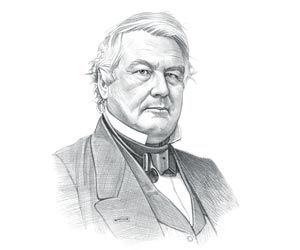|
"Uncle
Tom's Cabin" was first serialized in a weekly abolitionist
paper called 'The National Era' and published as a novel
in 1852.
Facts about
Uncle Tom's Cabin by Harriet Beecher Stowe
The following fact sheet contains interesting facts and information
on Uncle Tom's Cabin by Harriet Beecher Stowe.
Who wrote Uncle Tom's Cabin?
Uncle Tom's Cabin
was an anti-slavery novel written by Harriet Beecher
Stowe. The original title was 'Life Among the Lowly'.
When did Harriet Beecher
Stowe write Uncle Tom's Cabin?
Uncle Tom's Cabin
was by Harriet Beecher Stowe between 1850-1852.
Uncle
Tomís Cabin was developed from June 1851 to April 1852
as a series of regular installments in a Washington, DC,
abolitionist weekly paper called The National Era, whose
editor was Gamaliel Bailey. Uncle Tomís Cabin was then
published as a two volume novel by John P. Jewett and
Company of Cleveland Ohio on March 20, 1852. The book
became a best seller and the story of Uncle Tom's Cabin was
dramatization by G. L. Aiken and the play was staged at
the National Theatre in the summer of 1853.
Uncle Tom's Cabin for
kids:
Anti-slavery Propaganda
Anti-slavery propaganda by journalists, authors and
illustrators was one of the methods used by the
1830 Abolitionist Movement who wanted to abolish
slavery.
Uncle Tom's Cabin
for kids:
The Underground Railway
The
Underground Railroad had been established in1832
to provided money, clothes, transport and safe houses to
facilitate the escape of slaves from their harsh lives
of unpaid toil in the southern plantations.
Why did Harriet Beecher
Stowe write Uncle Tom's Cabin?
Harriet Beecher
Stowe wrote Uncle Tom's Cabin
following the passing
of a more stringent
Fugitive Slave Act in 1850.
The 1850
Fugitive Slave Act was passed on September 18, 1850, was
part of the
Compromise of 1850
and included as a concession to the South, increasing penalties
against fugitive slaves and the people who helped them.
The penalties for
helping slaves were increased to $1000 and six
months in jail.
Who are the Main
Characters in
Uncle Tom's Cabin?
A short summary and
overview of "Uncle Tom's Cabin" are detailed via
Uncle Tom's Cabin Summary.
Who are the main characters in Uncle Tom's Cabin? The main
characters who feature in "Uncle Tom's Cabin" are Uncle Tom (slave),
Simon Legree (vicious slave owner), Eva St. Clare (angelic white
girl), Miss Ophelia (bigoted white woman), Arthur Shelby (kindly
slave owner), George Shelby (Abolitionist), Augustine St. Clare
(kind slave owner), Topsy (slave), Cassy (slave) and Eliza (slave).
Harriet Beecher Stowe also provides and
example of the 'Hiring-out
system' in which Tom's wife goes to work for a baker in
order to raise the money to buy Uncle Tom back.
Uncle Tom's Cabin by
Harriet Beecher Stowe
Harriet Beecher Stowe was a social reformer who advocated the rights
of slaves and believed in the rights of women. She was also
extremely religious and the ideals of the Christian faith are
reflected by her evangelical fervor in the story of Uncle Tom's Cabin.
Harriet Beecher Stowe was a gifted writer and readers of her work
were moved to tears by the tales of cruelty towards the characters
who were featured in "Uncle Tom's Cabin" and the impact of slavery
on families. However, the book was balanced and it presented some of
the favorable aspects of slavery and the kindness of some slave
owners, but it also crystallized the sentiments of the North.
The Effect of Uncle Tom's Cabin
Uncle Tom's Cabin and the Fugitive Slave Law convinced the people of
the North that bounds must be set to the extension of slavery and
contributed to the
Causes of
the Civil War. The
informal, conversational writing style adopted by Harriet Beecher
Stowe in Uncle Tom's Cabin personalized the political and economic
arguments about slavery and enabled readers to emphasize with the
plight of the slave characters. Uncle Tom's Cabin by Harriet Beecher
Stowe contributed to the outbreak of the
American Civil war (1861-1865) but also changed
opinions towards slavery throughout the world. President Abraham
Lincoln is reported to have greeted Harriet Beecher Stowe ten years
after the publication of "Uncle Tom's Cabin" saying "So you're
the little woman who wrote the book that made this great war." The
book of Uncle Tom's Cabin was translated into sixty different
languages and is still read in college and high schools exploring
the history and issues of race, religion and gender.
Black
History for kids: Important People and Events
For visitors interested in African American History
refer to Black History -
People and Events.
A useful resource for
teachers, kids, schools and colleges undertaking projects for the
Black History Month. |

